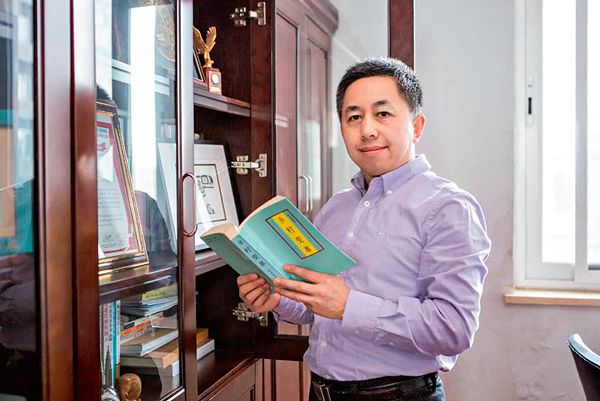As the first nation to achieve the UN Millennium Development Goals, China has made immense contributions to reducing global poverty. The Chinese government is presently bringing into effect targeted poverty alleviation strategy, trying to lift the country’s penurious rural population out of poverty, according to present standards, by 2020. Non-government organizations (NGOs) have long played an important role in promoting public participation in poverty alleviation efforts. In the new period, how will NGOs further mobilize people’s proactive support for the poor? This was the question China Today raised in an exclusive interview with Liu Wenkui, Secretary General of the China Foundation for Poverty Alleviation (CFPA).
Civil Force to Overcome Poverty
China Today (CT): What role do NGOs play in overcoming poverty? What are the characteristics of poverty-relief work?

Liu Wenkui.
Liu Wenkui (Liu): Chinese President Xi Jinping said in his message of congratulations to the Civil Society 20 China 2016 (C20) in July that civil society organizations play an important role in public affairs, as well as in economic and social development. The mobilization and organization of civil power is a main feature of China’s poverty relief, including fixed-point poverty alleviation, poverty relief coordination between eastern and western China, and campaigns in which NGOs and the public participate.
Statistics show that, from 1994 to 2000, NGOs and other social forces raised funds and goods with a value exceeding RMB 50 billion, accounting for 28 percent of total poverty relief funds in China, and 35 percent of the ratio of poverty alleviation contributions. Since the turn of the century, NGOs, encouraged and supported by the government, have made constant innovations and played a significant role in promoting equality in education, better health conditions, and community development. They have also given timely support to humanitarian aid in poverty-stricken areas.
Thirty years of experience has made us aware of the great potential NGOs have for eradicating poverty. First, NGOs offset the shortfalls of government poverty alleviation. In addition to raising more social resources to benefit more poor people, these organizations can also apply their relevant experience to project management, supervision, and assessment. They thus make this work more effective. Second, social organizations can create a wide range of mechanisms, such as funding, multilateral cooperation, participatory decision-making and application, and empowering the poor. Third, the participation of social organizations in global poverty relief activities is conducive to poverty reduction through exchanges among states of experience and cooperation, and jointly studying the problem of poverty on a global scale.
CT: China is now following a targeted poverty alleviation strategy. How will non-profit organizations contribute to national targeted poverty relief efforts?
Liu: There are two layers to targeted poverty alleviation. First, poor people are the target, that is to say, the work must focus on households registered as poor in poverty-stricken areas. This is the most important index. Second, the work evaluates its effectiveness by, after pinpointing the target, determining whether or not the project in question can solve the problem through increasing incomes and thus improving people’s capacity to improve their living conditions. The effect of poverty alleviation work is therefore also a major index.
Public interest organizations should trifurcate their efforts. They must first of all mobilize resources, give play to their strengths, and mobilize cooperative partners. Second, the project design should be geared to poor households in poor areas. Third, research and innovation should lay emphasis on effect, evident in whether or not it can help to increase the incomes of low-income families and improve their capacity to escape poverty. This is how non-profit organizations can best achieve targeted poverty alleviation.